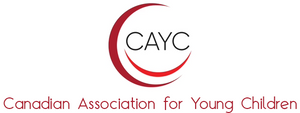Making pedagogical choices with a bird's nest
A few years ago, I worked as an early childhood educator at a childcare centre in Nova Scotia. During the spring season, a robin bird built its nest in the rafters of the gazebo on our playground. The robin’s nest became quite a novelty as the children were eager to take a closer look at the eggs. Over the following weeks, the toddlers’ and preschoolers’ experiences with the nest were impacted by the pedagogical decisions made by each group’s educator.
One educator felt that peering into the nest could potentially harm the birds and guided the children away from it. Another educator felt that helping children to keep a safe distance while allowing them to look inside the nest could support their respectful interactions with wildlife. As they observed the nest, this last group spent time talking about birds, relating the nest to their own beds, and babies.
While each educator’s approach was intended to be respectful to wildlife, their decisions had a significant effect on the children’s opportunity to explore nature very differently.
The separation between children and the natural world exists in our social, emotional, and physical connections in Western society. Situations such as the ones described in these examples demonstrate the divide that can be created between children and the natural world, affecting their attentive interactions and relationships with nature.
Your thoughts?
How do your decisions, as an educator, create conditions for children’s interactions with the natural world?
What does a meaningful relationship between children and nature look like to you?
About the author
Robyn Ashley is a recent graduate of the Master of Arts in Child & Youth Study program at Mount Saint Vincent University, Halifax. Her thesis explored the constructions of children’s relationships with nature in the early learning curriculum frameworks of Nova Scotia and Aotearoa New Zealand. She has experience working as an early childhood educator in Nova Scotia’s early learning and childcare sector.
Read all blogs by Robyn Ashley
Further reading
van Groll, N., & Fraser, H. (2022). “Watch out for their home!”: Disrupting extractive forest pedagogies in early childhood education. Journal of Childhood Studies, 47-53. https://doi.org/10.18357/jcs202219894
Nelson, N., Pacini-Ketchabaw, V., Nxumalo, F. (2018). Re-thinking nature-based approaches in early childhood education: Common worlding practices. Journal of Childhood Studies, 43(1), 4-14. https://doi.org/10.18357/jcs.v43i1.18261
Warden, C. (2019). Nature Pedagogy: Education for sustainability. Childhood Education, 95(6), 6-13 doi:10.1080/00094056.2019.1689050
